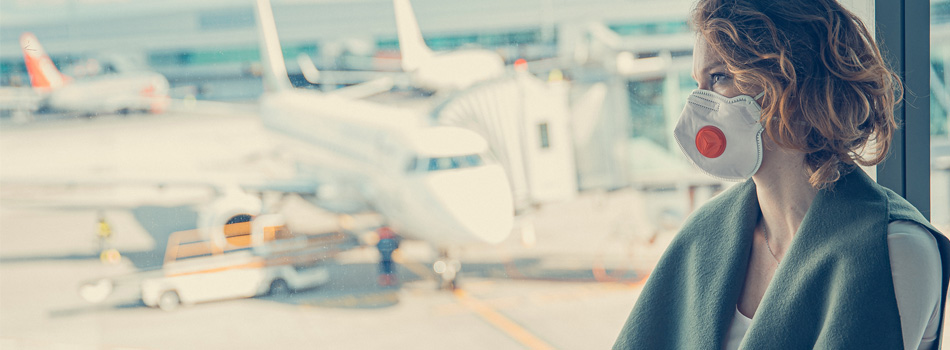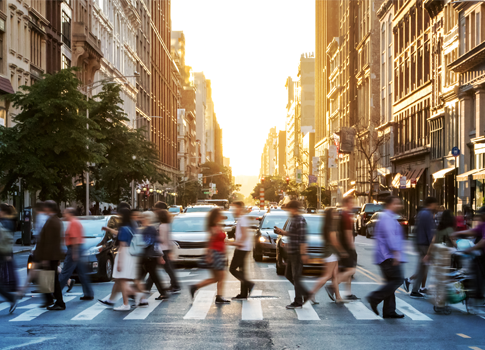We are currently in the middle of a summer holiday season like no other as consumers ask themselves whether they want to even leave their homes for the break, let alone go abroad.
The pandemic has undoubtedly hit the travel sector the hardest, with furloughs and job losses affecting all aspects of the industry.
STR occupancy data in June reported that hotels were at 29% occupancy, a 59% decrease on the same period last year.
To put this into perspective, Roger Dow, president and chief executive of the US Travel Association has said “the impact on travel is six or seven times greater than the 9/11 attacks”.
Record levels of anxiety
According to a survey by the ONS, over 25 million people in the UK over the age of 16 are “highly anxious”, double the number recorded in 2019.
These anxieties carry through to leisure pursuits for many. Research by IPSOS shows a pretty divided population in how comfortable people feel about resuming general leisure activities.
While there are many people who are desperate to escape their homes, the reality of travel bans and unexpected quarantine processes in place upon return mean that recovery for the travel industry will be a complex journey even for those most willing to resume travel.
Causes of anxiety in travel
The most obvious cause of concern for those who do feel anxious about travel is for health and hygiene.
However research by McKinsey reveals health and hygiene ‘only scratches the surface of the changes necessary in the aftermath of the current crisis’.
On the prospect of staying in hotels, staying in the room and overall exposure to guests was reported to drive the most anxiety.
When boarding flights, overall exposure to travellers also ranked the highest driver.
While travel companies can help alleviate travel anxieties around hygiene, it is going to be difficult to restrict the exposure to other travellers.
The recent 14-day quarantine measures put in place upon return from popular destinations like Spain and France is also likely to lead to financial anxiety over whether planned trips will go ahead, and whether what we’re seeing will extend to other countries.
This may lead to more hesitation in booking new trips in the coming weeks and months.
Gradual signs of recovery
China, where the pandemic began, offers a view of what’s to come for the travel sector.
According to reports from McKinsey in June 2020, domestic airline passenger levels have grown to 50% of pre-crisis levels and hotel occupancy levels sit at 60% of last year’s levels.
The report also cites a positive shift in the number of married couples with kids who are planning to travel in the next four months as a key audience as restrictions are lifted.
Closer to home there are also positive signs of a gradual easing of anxiety around travel.
Weekly travel insights by Skyscanner show that while global traveller anxiety is still high, it is at its lowest point since lockdown began at 58% compared to 72% during lockdown.
The number of people that believe it is now safe to travel internationally also doubled to 12%.
Communicating with anxious customers
When communicating with anxious customers, there are four guiding principles that travel brands can follow:
1. Communicate to build confidence and trust
Many people are taking action to help control their anxiety, and there are ways in which travel brands can support these actions.
Consumers are concerned with safety and cleanliness, so brands should clearly communicate their protocols.
When people are uncertain about a behaviour they look to trusted sources to help guide them.
Frequent communication from brands about protocols which importantly explain how they meet medical or government advice can help build confidence in the safety of travel for customers.
2. Offer control
After months of lockdown, consumers want to feel safe and secure when venturing out of their confined comfort zones.
According to PWC research 43% of consumers are likely to spend more to confirm physical distancing on their next flight.
This is because consumers feel a stronger desire for control when something threatens their sense of control.
In response, brands should build trust with customers at every touchpoint to make them feel in control of their environment.
They should help to meet travellers’ concerns by offering them the ability to control elements of their travel environments through bespoke services or add-on measures.
3. Adapt and react
Feeling anxious means many people will have a far more heightened sense of risk.
Travel brands, therefore, should focus on presenting propositions in a way that appear low risk and give consumers flexibility and reassurance.
For example, relaxing booking policies and waiving fees for date changes are steps brands can take to diminish worries around changes in COVID-19 travel restrictions and appearing less risky to the consumer
4. Understand & align to your audience segments
In the long term there will inevitably be a split between people who are eager to travel and people who won’t feel comfortable travelling for a long time.
Some people may wish to travel more than ever before after having time to reflect through lockdown.
For travel brands, understanding these emerging customer segments is key to their success in changing the way they think about target audiences.
Brands should identify and nurture these groups and ensure their communications are relevant to their needs.
While inspiring content may be relevant to one group, safety and reassurance may be relevant to another. What is important though, is that brands send the right message to the right audience.
It might take time but eventually people will want to travel again.
Exciting and inspiring consumers back into travel is going to be important as they turn to travel as a form of pandemic healing once it is safe to do so.
Whether this be through the booking process, flexibility or personalisation, travel companies have the opportunity to adapt to changing consumer needs into a new era of travel.
This article was written by our senior behavioural planner, Stephanie Watson and was originally published in Travolution.






